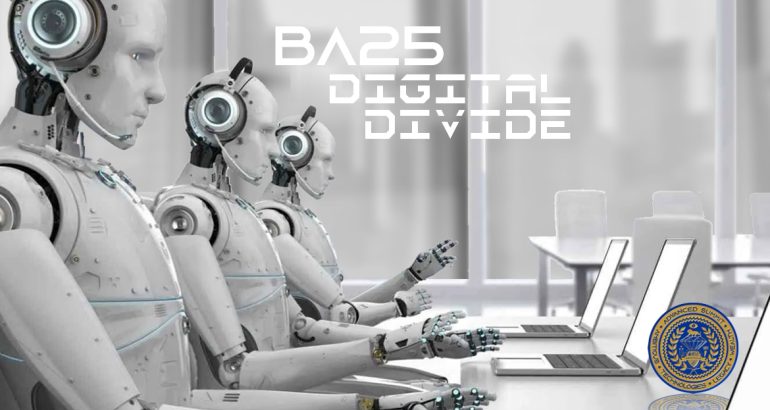-
-
-
Hamilton, Bermuda

Digital Divide
Solutions

Digital Divide Solutions:
In today’s interconnected world, the digital divide—the gap between those with access to digital technologies and those without—remains a pressing issue. The Advanced Summit addressing this divide is crucial for ensuring equitable access to information, education, and economic opportunities.
Below, we explore key strategies and initiatives aimed at bridging this gap.
-
1. Enhancing Digital Literacy
-
2. Expanding Affordable Internet Access
-
3. Empowering Communities Through Technology
-
4. Fostering Digital Self-Determination
-
5. Supporting Women in Technology
-
6. Collaborating for Digital Inclusion
-
7. Advocating for Policy Changes
Bridging the digital divide requires a multifaceted approach that includes enhancing digital literacy, expanding affordable internet access, empowering communities, supporting underrepresented groups, fostering digital self-determination, and advocating for inclusive policies.

Bridging the Gap for a Connected Future
Customers look online for the products they need. From social media, online games, multimedia and mobile phones, access to remote operations is expected to be enhanced.
-
Today’s world is a digital world.
-
Ai is here to stay.
-
Everything is online.
-
-
Enhancing Digital Literacy
-
Digital literacy is foundational for individuals to effectively navigate and utilize digital tools. Educational programs that focus on teaching essential digital skills empower individuals to participate fully in the digital economy. For instance, Roxbury Community College recently hosted a hackathon where students developed AI-driven solutions to boost engagement with online educational platforms, aiming to improve digital literacy among their peers.
-
Expanding Affordable Internet Access
Affordable and reliable internet connectivity is vital for bridging the digital divide. Organizations like the National Digital Inclusion Alliance (NDIA) advocate for policies and programs that promote broadband accessibility for underserved communities. NDIA’s efforts include highlighting disparities in internet access and pushing for inclusive broadband policies.
-
Empowering Communities Through Technology
Community-based initiatives play a significant role in digital inclusion. Recode, formerly known as the Center for Digital Inclusion, operates technology and learning centers in low-income and rural areas. These centers provide access to digital tools and training, enabling communities to harness technology for social and economic development.
-
Fostering Digital Self-Determination
Ensuring that individuals have control over their digital identities and data is essential for meaningful participation in the digital world. The concept of digital self-determination emphasizes equitable access to digital infrastructure, digital literacy, representation of diverse viewpoints, human-centered design, and robust data governance.
-
Supporting Women in Technology
Targeted programs that address gender disparities in technology are crucial. Tech Herfrica, for example, focuses on the digital and financial inclusion of women and girls in rural African communities. By providing digital literacy training and access to technology, Tech Herfrica empowers women to participate actively in the digital economy.
-
Collaborating for Digital Inclusion
Public-private partnerships can effectively address digital inequities. EveryoneOn is a nationwide nonprofit organization in the United States that collaborates with internet service providers and device manufacturers to offer affordable internet services and devices to low-income families, thereby promoting digital inclusion.
-
Advocating for Policy Changes
Policy advocacy is vital for systemic change. Organizations like the NDIA work to influence federal and state policies to support digital equity, ensuring that underserved communities receive the necessary resources for digital inclusion.
What is the digital divide meaning ?
The digital divide is the gap between those who have access to technology, the internet and digital literacy training and those who do not. It affects all generations – both rural and urban communities – and a wide variety of industries and sectors.
What are examples of digital divides ?
Examples of the digital divide include digital literacy skills, technology availability, healthcare disparities, high-speed internet access, educational inequities and economic disparities.
Why is digital divide a problem ?
The digital divide creates a sense of exclusion among people, hampers education by limiting access to online resources, and has economic consequences by restricting job opportunities and skills development. Bridging this divide is crucial to ensure equal access and opportunities for all.
How to fix a digital divide ?
1. Increased Connectivity. …
2. Better Digital Literacy. …
3. Affordable, Equitable Access. …
4. Invest in Digital Education. …
5. Devise Locally Appropriate, Public-Private Solutions. …
6. Develop Stronger Broadband Infrastructure.
Choose Options
Multiple Colors
RTL Version
- RTL Version
- LTR Version
Boxed Version
- Boxed
- Full Width
Want Sticky Header
- No
- Yes
